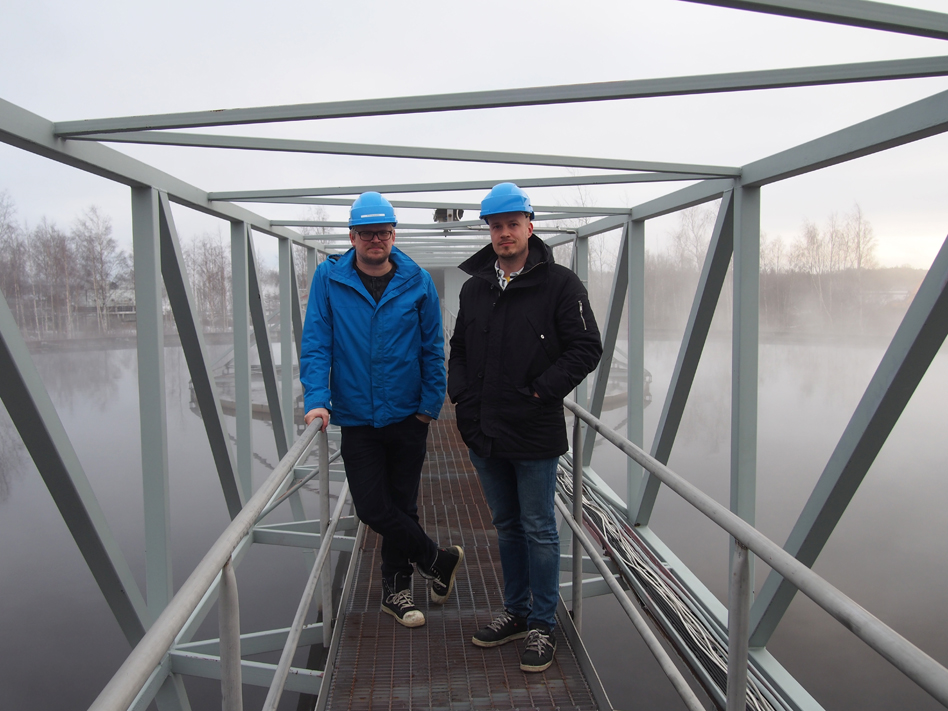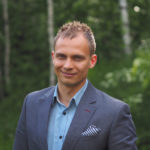29.1.2018 - Johannes Puro - Wastewater treatment

The tightening discharge regulations and increased environmental awareness have created a need to revise wastewater treatment systems in pulp and paper industry.
Modern pulp and paper industry wastewater treatment plants, which usually include activated sludge process, are usually at least moderately well instrumented and equipped with digital control systems. Vast amounts of process data are collected and stored to mill archives.
However, without sophisticated data analytics only a small fraction of this data can be used as such in daily operation.
Only a very few companies have managed to adopt dedicated approaches that utilize the potential of already available mill data for proactive and real-time process control in pulp and paper industry wastewater treatment.
Toihan Oy has found its niche market from pulp and paper industry with predictive analytics for activated sludge plant control and optimization.
From an operational point of view the challenge in operating activated sludge process without predictive analytics comes with long retention times and slowly changing process, which makes daily process variations and disturbances difficult to observe before they affect the final effluent quality. Toihan´s predictive analytics has been proven to increase process awareness and enable activated sludge process adjustments before the effluent quality is compromised.
– By combining mill process data, routine laboratory measurements and data-driven soft sensors, for example activated sludge process stability and performance can be improved significantly. During the test-period that lasted 120 days we were able to achieve notable reductions in both nutrient and organic loads to waterways, comments Chief Technology Director Sakari Toivakainen.
After the successful test period the service concept around predictive analytics has developed rapidly.
– As we live in big data era, we are able to adopt best practices from data based business models and implement them to our services. The best thing we can offer to our customers with our services is the agility of mobile industry and end-user customization with low capital costs and without long-term commitment requirements, explains the CEO Heikki Hannukainen.

How did it all start?
The two men originally met when working in the same research group that was studying forest industry waste waters.
– All of our study cases were more or less about problem solving. Gradually the idea for business grew as we realized there was no such operator in the market. In agreement with the rest of the group we decided to start the business as a spin-off for the study, Toivakainen tells.
– As we see it, the University’s task is to produce new information. With our work, we are applying existing knowledge to industry practices, Hannukainen adds.
“In pulp and paper industry the geographic area and waterways always determine what is the critical level of emissions”
Over the years, the focus of wastewater treatment has shifted to proactive work. Everytime the process gets interfered, money is lost. However, optimal performance is also an environmental question. As less chemicals are needed for cleaning the water, less chemicals end up in the water system.
– Nutrients play a big role in this. Nutrients such as phosphorus and nitrogen affect for instance to the eutrophication of the Baltic Sea. In pulp and paper industry the geographic area and waterways always determine what is the critical level of emissions, Sakari Toivakainen explains.
According to the men, emission requirements are constantly tightening. The level of cleaning achieved with conventional technologies is not going to be enough for long. New technologies and new investments on unit processes are needed to cut the environmental load.
– Even though you can meet the required limits for emissions in the overall process, it can be done in a more environmentally friendly way with optimizing, he rationalizes.
At the moment Toihan is looking to grow in South America and Asia where there are a lot of major players in pulp and paper industry.
– Environmental regulation in these markets is rapidly getting tighter, so there is our chance to become the leading partner in improving wastewater treatment process, Heikki Hannukainen concludes.
Interviewee
Author

Leave comment - comments(0)